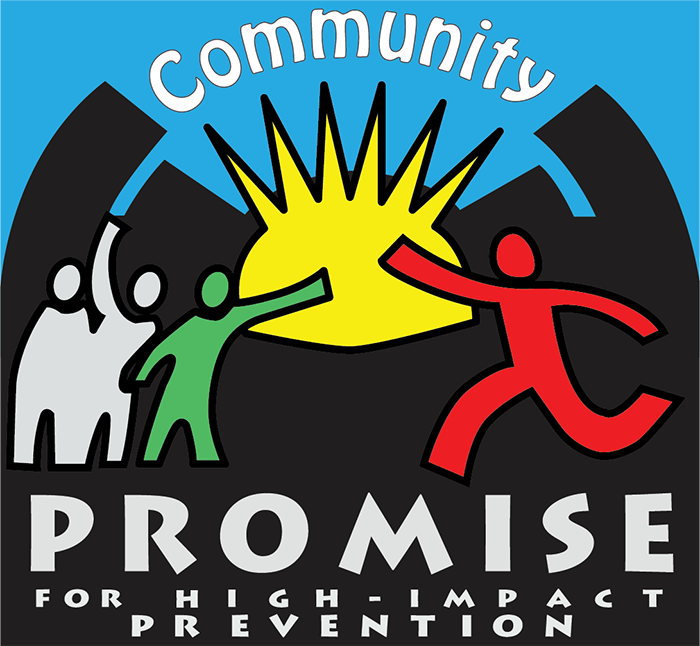PROMISE for HIP
Peers Reaching Out and Modeling Intervention Strategies (PROMISE) for high-impact prevention (HIP) is a community-level HIV/STD prevention intervention that relies on role model stories created by and for the community and peer advocates to reduce HIV risk behaviors and increase engagement related to the HIV continuum of care.

About PROMISE for HIP
PROMISE for HIP is based on several behavioral theories, including Stages of Change Theory, the Theory of Reasoned Action, and Social Cognitive Theory. PROMISE for HIP begins with a community identification process to collect and analyze information about the risk networks, sex and drug risk behaviors, indicators related to the HIV continuum of care, and identification of determinants of risk. This helps agencies identify and intervene with the intervention populations and appropriately tailor the intervention to specific network needs.
Members of the intervention population who have made positive behavior change and/or engage in HIV care, including medication adherence, are interviewed and role models’ stories are written based upon the interviews. The stories are personal accounts of positive behavior change about how and why the participants took steps to reduce risk, engage in HIV care, be adherent to medication, and the resulting positive effects on their lives. The stories can be presented as printed materials via face-to-face community outreach or in video format using social media platforms.
Peer advocates from the intervention population are recruited and trained to distribute the role model stories and prevention materials within their social networks. New role model stories are written based on continuous formative research that reflects behavior change within the intervention population.
Intervention Goals
- To disseminate positive messages to intervention populations about condom use, HIV testing, accessing pre-exposure prophylaxis (PrEP) and post-exposure prophylaxis (PEP), engaging and/or re-engaging in care, and adhering to anti-retroviral therapy (ART) regimens.
- To encourage significant movement by community members toward consistent condom use with their main and non-main partner.
- To significantly increase condom carrying among members of the communities.
Intervention Core Elements
- Community identification process to collect information about the network, including HIV/STD risk behaviors and HIV care continuum.
- Create role model stories based on personal accounts from individuals in the intervention population who have made positive behavior change.
- Recruit and train peer advocates from the intervention population to distribute role model stories and prevention materials.
- Continuous evaluation to capture behavior change within the intervention population.
PROMISE for HIP Training
This training has two components:
- 1-hour eLearning pre-course
- 2-day virtual instructor-led training
To access eLearning modules, including training prerequisite courses:
- Log-in to CDC TRAIN and access the HIV CBA Training Plan (step-by-step instructions are available).
- Select the module you wish to take.
- Launch the module or save the module for later.
To view and register for scheduled virtual instructor-led trainings:
- Access the National HIV Classroom Learning Center training calendar hosted on Cicatelli Associates, Inc.’s (CAI’s) website.
- Pre-register for your selected course via the link provided in the training calendar.
Complete your registration on CDC TRAIN as directed when you receive an email from the National HIV Classroom Learning Center. You must join the HIV CBA Learning Group and locate the HIV CBA Training Plan in order to complete your CDC TRAIN registration for a specific classroom session (step-by-step instructions are available).
Technical assistance for the implementation of PROMISE for HIP is available.
To request technical assistance:
- CDC’s directly funded health department and CBO partners may request technical assistance by submitting a request in the CBA Tracking System.
- Organizations not directly funded by CDC may contact their local health department for assistance in submitting a request.
If you have questions or need additional assistance, please contact HIVCBA@cdc.gov.
Implementation and Marketing Materials
The materials and resources listed below support the implementation and/or marketing of PROMISE for HIP by health departments, community-based organizations, and health care or other organizations. The resources are evidence-based and designed for cost-effective, scalable implementation.
- CDC AIDS Community Demonstration Projects Research Group. Community-level HIV intervention in 5 cities: Final outcome data from the AIDS community demonstration projects. Am J Public Health 1999;89(3):336-345.

